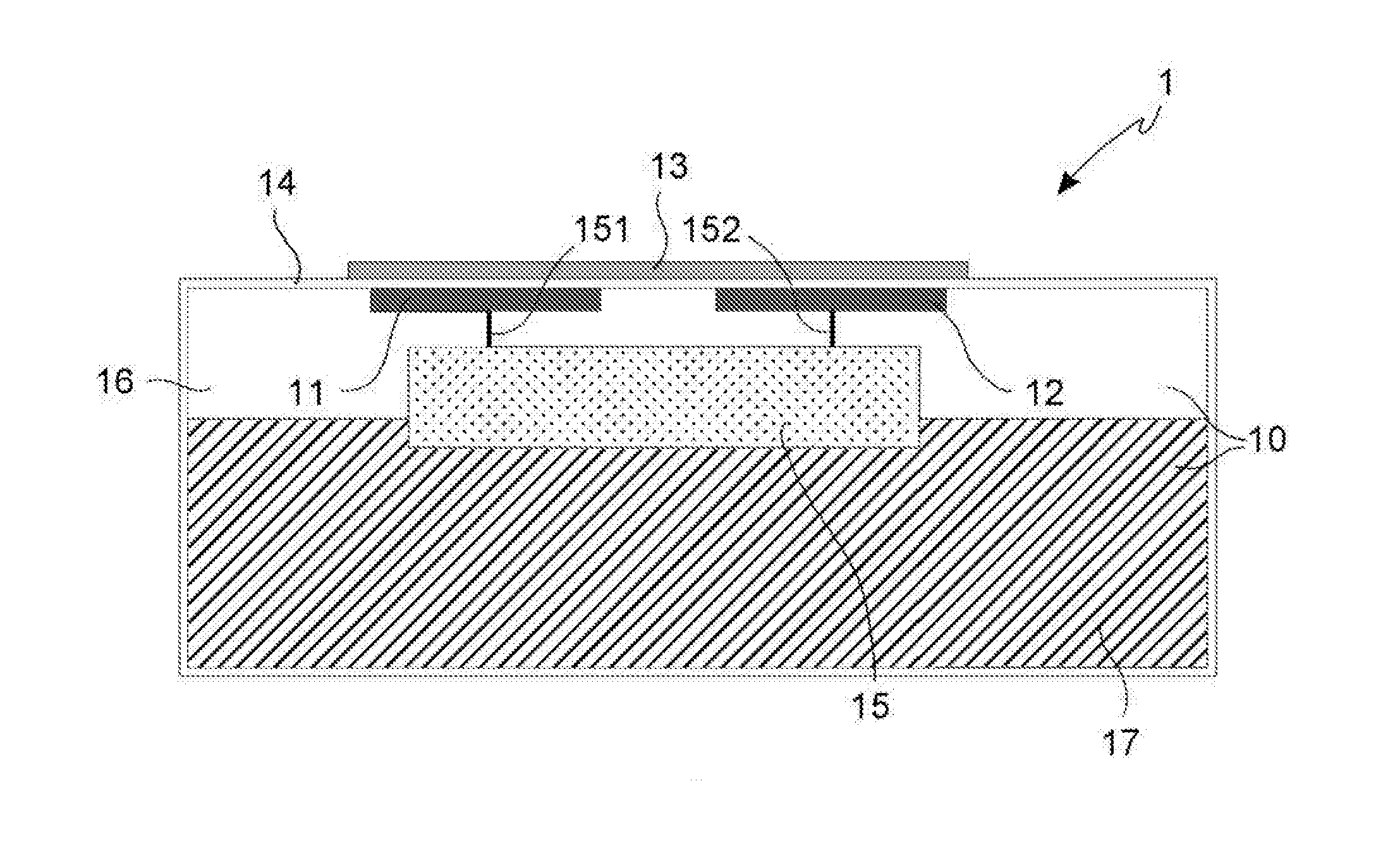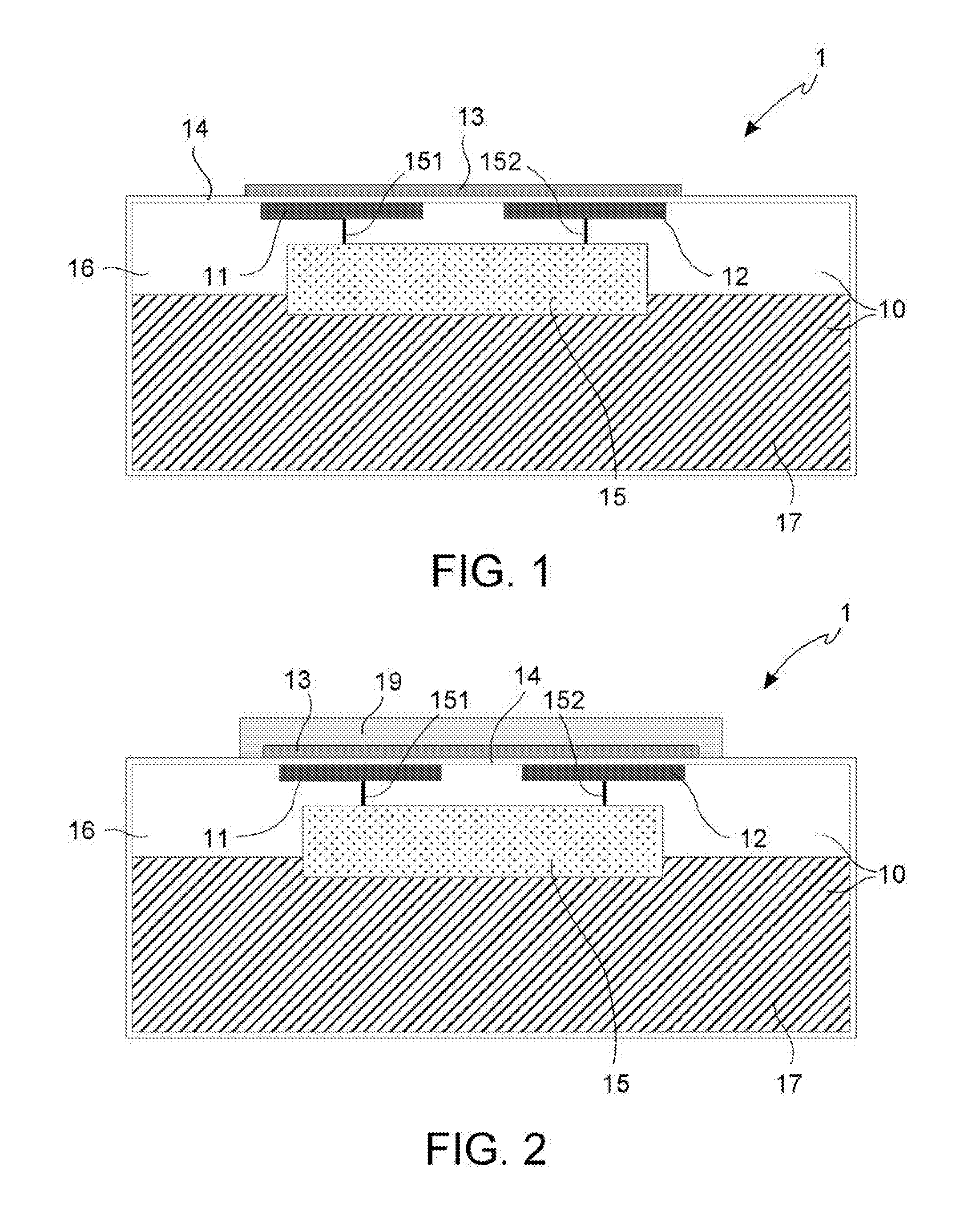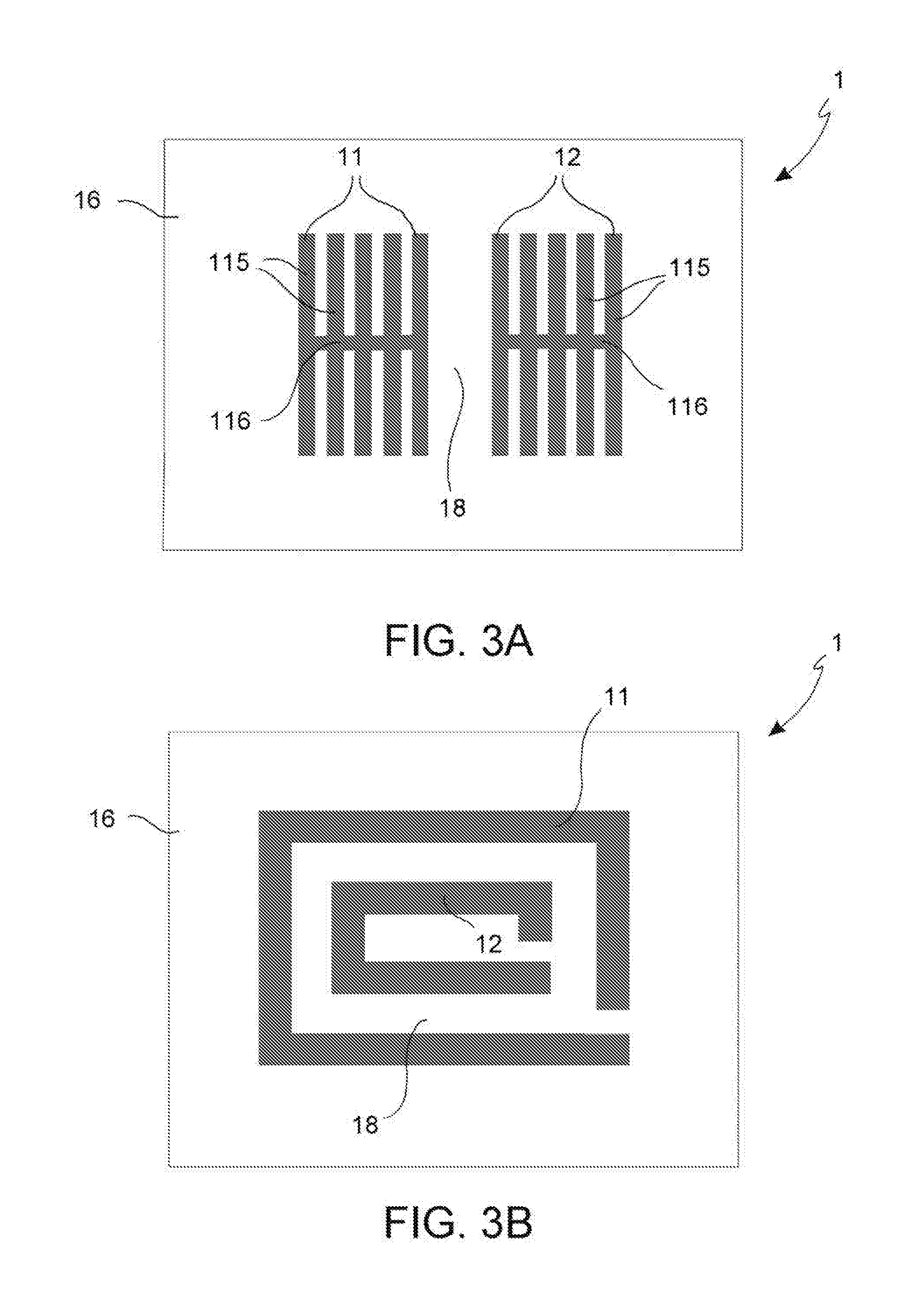Integrated electronic device for monitoring humidity and/or environmental acidity/basicity and/or corrosion
- Summary
- Abstract
- Description
- Claims
- Application Information
AI Technical Summary
Benefits of technology
Problems solved by technology
Method used
Image
Examples
Embodiment Construction
[0045]With reference to the FIGS. 1-13, an integrated electronic device 1 for detecting at least one parameter related to humidity and / or presence of water and / or acidity / basicity of an environment surrounding the device is now described. In particular, the electronic device 1 of the invention is suitable for detecting at least one parameter related to any of the following phenomena of an environment surrounding the device: humidity and / or presence of water and / or acidity / basicity. Such device 1 comprises a separation layer 14 from the surrounding environment, having at least one portion of insulating material 14, and further comprises a first conductive member 11 and a second conductive member 12, made of an electrically conductive material (for example, metallic), arranged inside the separation layer 14, with respect to the surrounding environment, and separated from the surrounding environment by the separation layer 14.
[0046]The device 1 also comprises a measurement module 15, h...
PUM
 Login to View More
Login to View More Abstract
Description
Claims
Application Information
 Login to View More
Login to View More - R&D
- Intellectual Property
- Life Sciences
- Materials
- Tech Scout
- Unparalleled Data Quality
- Higher Quality Content
- 60% Fewer Hallucinations
Browse by: Latest US Patents, China's latest patents, Technical Efficacy Thesaurus, Application Domain, Technology Topic, Popular Technical Reports.
© 2025 PatSnap. All rights reserved.Legal|Privacy policy|Modern Slavery Act Transparency Statement|Sitemap|About US| Contact US: help@patsnap.com



